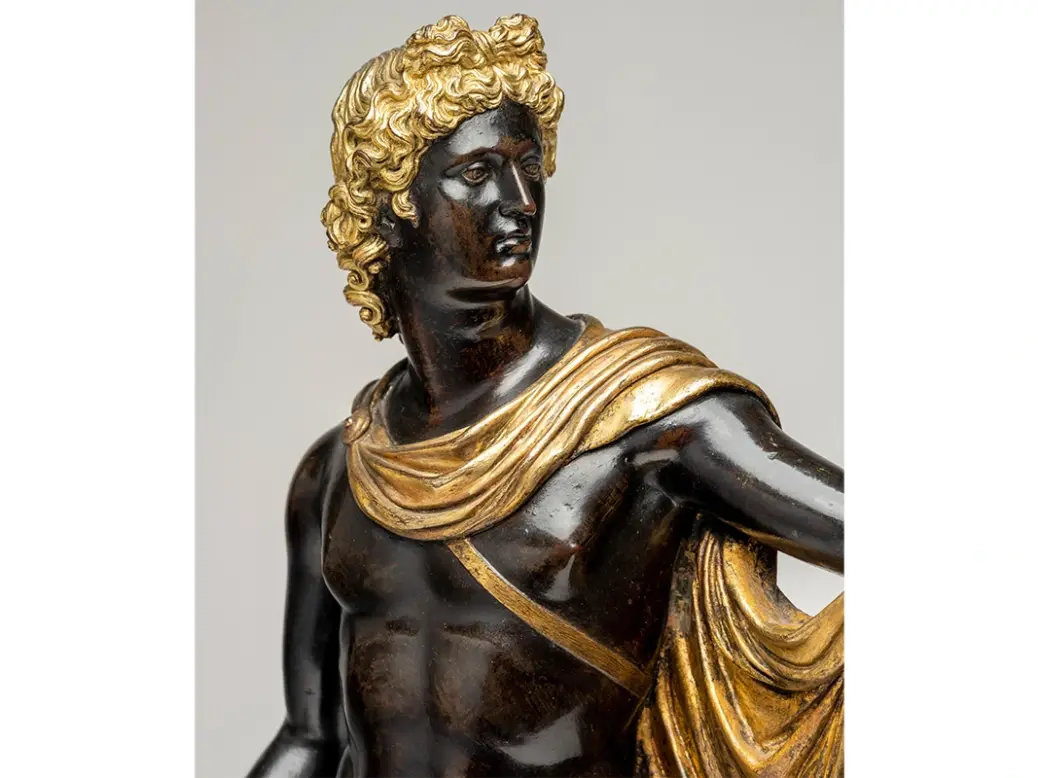
Inheritance tax is back in the news this week after the estate of property developer Cecil Lewis donated a statue of Apollo to the British nation to offset a £10.5 million tax bill. The story shines a light on the Acceptance in Lieu scheme – a valuable tool for HNWs to consider in estate planning.
The exceptional Renaissance bronze by Pier Jacopo Alari Bonacolsi (known as Antico) was part of the collection of Lewis and his wife, Hilda, who were philanthropists and art collectors. The 16th-century piece, regarded as one of the finest bronzes ever created, is now set to go on display at the Fitzwilliam Museum in Cambridge. The Arts Council is expected to confirm the donation of the statue later this month, according to The Guardian.
The Apollo statue is thought to be one of the highest value single items ever donated through the Acceptance in Lieu (AiL) scheme. The highest single tax contribution to date was made in 2014 by the estate of Lucien Freud, which donated a collection of works by Frank Auerbach worth almost £16.3 million.
The Cecil Lewis donation serves as a timely reminder for estates of the opportunities afforded by AiL when dealing with inheritance tax (IHT).
This is particularly relevant given the current political climate. IHT was notably absent from chancellor Jeremy Hunt’s autumn statement. There is speculation that there might be a pre-election easing intended to boost Conservative support among HNWs, but there are no guarantees. If Labour wins in 2024, IHT is unlikely to change.
How does the Acceptance in Lieu scheme work?
Under the Acceptance in Lieu scheme, an offer of property (which can include objects of national interest, historic collections of art, land and buildings) is made to HMRC, whose responsibility it is to check there is a liability for inheritance tax – and that the offer is being made by the person liable. HMRC then refers the donation to the Arts Council’s panel, which will consider its monetary value as well as its cultural significance.
According to the Arts Council, the offeror can choose to make the donation conditional on the property going to a certain institution. But an offer can also be unconditional, in which case the Arts Council will advertise the donated objects and invite institutions to apply for access to them.
How much inheritance tax can be offset by AiL?
The AiL scheme allows an estate to receive the open market value of a work of art, from which the value of the liable inheritance tax is then deducted, apart from a douceur (or ‘sweetener’) of 25 per cent for art, or 10 per cent for land.
If the Apollo statue, which is estimated to have a value of £15 million, was sold on the open market, the amount of tax due to HMRC would be £6 million. The estate could then keep £9 million from the sale.
[See also: The best accountants and tax advisers for high-net-worth individuals in the UK in 2023]
But since it has been donated under the AiL scheme, a sweetener of £1.5 million is saved on the potential inheritance tax of £6 million, allowing a total value of £10.5 million to be offset in inheritance tax.
When exploring opportunities to use the Acceptance in Lieu scheme, executors should check two key things to avoid the potential of an estate dispute down the line. Firstly, they must prove that the title of any property or artwork that they offer to HMRC was held by the deceased (rather than with a trust or company, for example). Secondly, they should make enquiries as to whether any beneficiaries may have been promised that particular item from the estate.
If Acceptance in Lieu doesn’t work, consider Ceti
The Acceptance in Lieu scheme was conceived in 1910 on the back of a different but complementary relief – the Conditional Exemption Tax Incentive (Ceti).
Ceti allows a deceased owner’s executors not to pay inheritance tax on certain items or property (including artworks) passing on death as long as certain criteria are met. The new owners must look after these items, keep them in the UK and make them available for public view.
Ceti itself was created in response to the government’s introduction of death duties in the late 19th century, which had prompted hundreds of landowners to give away pieces of art in order to avoid duties, resulting in collections being broken up or taken out of their historically important context.
[See also: Trusts continue decline as self assessments fall and HMRC bureaucracy intensifies]
Under the scheme, estates can hold onto valuable artworks, but the public must be given access to these for a certain amount of time each year, which some families may be reluctant to accommodate.
Overall, though, for those who have inherited or accumulated important artworks, AiL or Ceti can provide some welcome relief. While it should also be acknowledged that both schemes can be used for lifetime transfers and to offset other taxes, executors would be wise to consider the role that fine art can play in inheritance tax planning.
May Delaney is a senior associate in the private client team at Harbottle & Lewis







